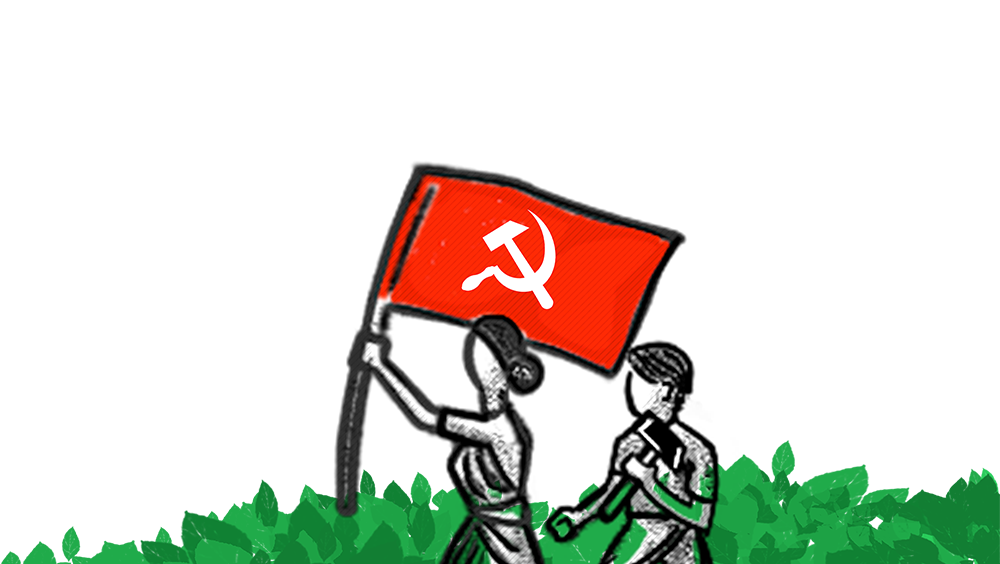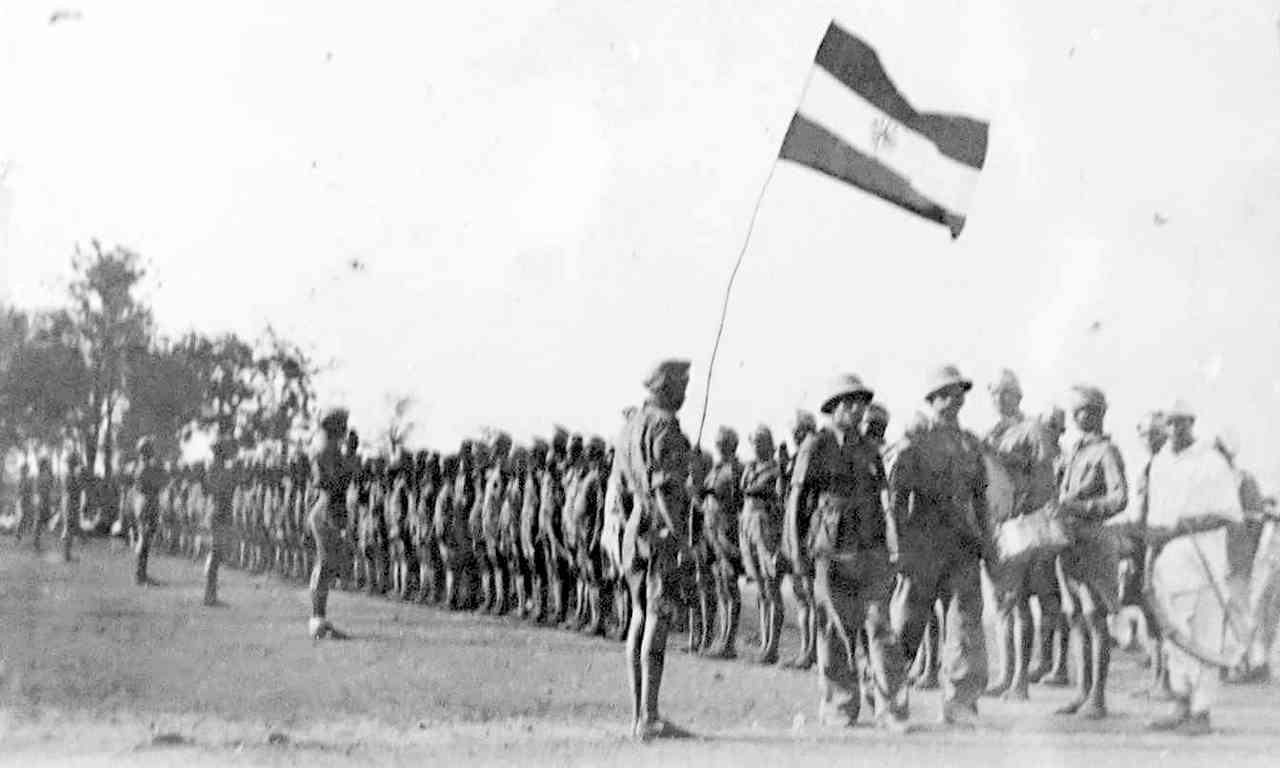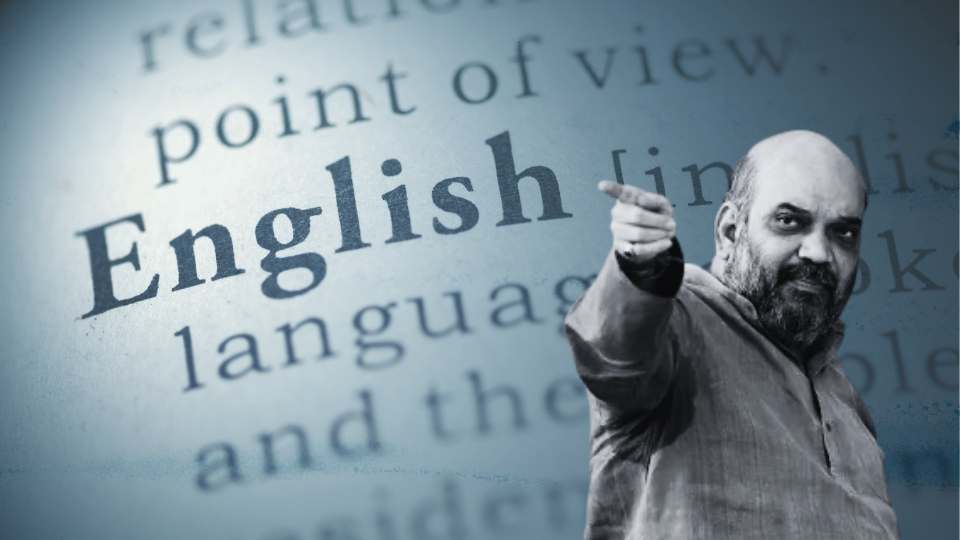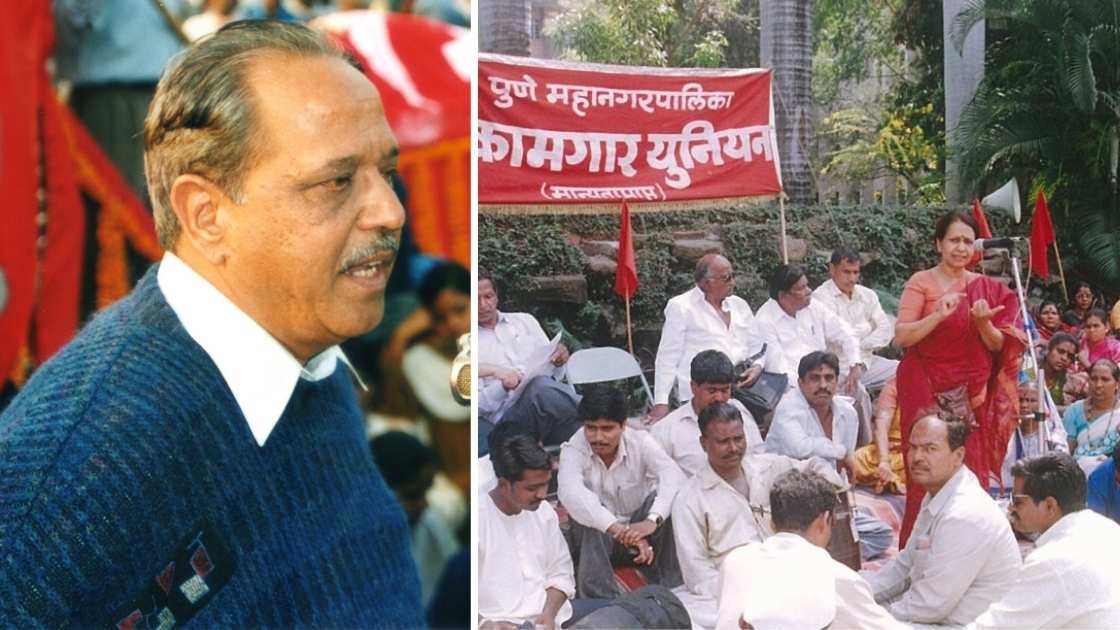Liberation is serialising this seminal article by the late Dr Gail Omvedt as part of its Freedom 75 series.
Organization of the Prati Sarkar : June 1943 to March 1944
The core of the prati sarkar lay in the one hundred or so (the number fluctuated and the personnel changed as some people were captured, or surrendered and new activists came in) underground activists—those who left their homes, moved from village to village serving as full-timers, carrying guns or other weapons, ready to confront the police if necessary, and carrying out 'constructive' as well as military and administrative tasks. They were organized into groups which were the effective decision-making centres for most activity. Representatives of all the groups met from time to time at the district level. They also maintained connections with socialist underground leaders in Bombay and this gave them their effective link with and sanction from the all-India Congress organization. At the village level, these activists moved to establish various structures that included volunteer squads (organized as the Rashtra Seva Dal, Tufan Dals etc.) and to some extent panch committees chosen or elected by the villagers themselves. This village structure will be discussed later, for it really developed only with the movement itself in late 1944 and 1945.Who were the `undergrounders'? Taking as a basis a list of names of 46 of the most prominent about whom full information is available, they represented most strongly the young and educated section of the bahujan samaj (see Table 3). It is true that Brahmans and merchants were somewhat over-represented in caste terms (but it should be remembered that most of the `merchants' here were the southern Jains, who were linked with the non-Brahman movement through such leaders as Bhaurao Patil). In class terms, landlords and white-collar employees also figure quite prominently. Nevertheless, the representation of middle-caste peasants and workers is stronger here than in any other nationalist activity for which we have records. (It might be added that the `Marathas' in this group included about half-and half `shahhanavkuli' aristocrats and ordinary Kunbi Marathas).
Dalits and women were under-represented. Broadly, the dalit masses of the village were an important support base for the movement, but rarely produced activists. This was also true of women. Though the activists and their nyayadan mandals took a broadly progressive approach on the question of women and in their oppression, they had no programme of structurally involving women as activists or in decision-making positions, not even in the rather co-optive form that Gandhian organizations did. Thus although there was one woman (Rajamati Patel of Aitawade) who was an activist and a fighter, this was an individual accident and the other activists hardly knew what to do about her, particularly after independence had been won. Other woman activists who moved through the area to organize, such as Indumati Nikam of Indoli (Karad taluka) and Leelabai Patil of Yede Nipani (Valva) were partly linked to Gandhian structures and worked with the Rashtra Seva Dal in the later period.
The grouping of the activists emerged somewhat spontaneously. In the beginning, work in the district was said to be divided under some nine groups led by different people, but most of those listed rapidly became non-functioning, either because their leaders were convinced Gandhians who rejected violence (Swami Ramanand), because they were captured (Vasantrao Patil) or because they adopted a policy of surrender in early 1943 (Y. B. Chavan)[1]. By the time the prati sarkar was fully functioning, there were three main regional groups and some peripheral ones.
1. The Shiralapeth or western group functioned partly in the Krishna valley but mainly in the hilly areas and included Shiralapeth and the north-western part of Valva taluka. Its leadership was the most mixed in caste, and Gandhian at least to begin with. Its first leaders were Baburao Charankar, a Brahman of Charan, and Ganpatrao Patil, a Maratha of Bilashi, both old Gandhian Congressmen who had worked together since 1932, and Barde Guruji, a Jain school teacher from Wategaon (in the plains of Valva) who had also been a Congress activist from the 1930s. When the first two and their followers surrendered after Gandhi's advice and Barde Guruji was captured in 1944, Babuji Patankar, a young Maratha poor peasant of Kasegaon, took over and reorganized the group. Work at that time was extended into Patan taluka to the north of Shiralapeth, with the partnership of a local leader, Bewa Mayshikar.
2. The Kundal or eastern group was centred on the rich areas of Tasgaon taluka on the banks of Krishna and part of Valva, while it also included the drier eastern taluka of Khanapur and a small slice of Karad taluka. Kundal was its rajdhani (capital). More than any other village in the district it was the centre of organized activities. The cousins G. D. Lad, Nathaji Lad and Appa Lad were the leaders of these activities in Kundal and they took Nana Patil as their figurehead and symbol. Naganath Naikaudi of Valva village was another leading activist who worked with this group, though at times he had his own agenda. The only woman fighter Rajamati Patil was also with this group. But apart from her all leading activists in this group were Marathas.
3. The Karad or central group was at first identified with Y. B. Chavan, but later came under the leadership of Madhav Jadhav (a young Maratha student of Karad who made a daring post-office robbery in the town in early 1943) and Dhanvantari (Laxmanrao Kulkarni, a Brahman of Kasegaon who had been associated briefly with the Rashtriya Svayamsewak Sangh). This was also in the central Krishna valley region.
It was in Karad, Patan, Valva, Khanapur, Tasgaon and Shiralapeth talukas that quite strongly functioning nyayadan mandals and associated volunteer and other village support structures were set up. Activity also went on in other parts of the district, in the northern areas of Wai taluka under Kisan Vir (a Shimpi activist), in Koregaon taluka under Pandurang Borate (a Maratha, and a textile mill worker who was one of many who returned to the district from Bombay at the outbreak of 1942). But these could not consolidate a real 'alternative government', and thus north of Karad the prati sarkar petered out into sabotage and sporadic individual activity, while south of Valva and Tasgaon it did not extend into the princely states of Sangli, Miraj and Kolhapur.
Representatives of the groups mentioned above met in district-wide meetings that took place about every six months and either made or ratified programmes for the whole prati sarkar. These also adopted from the beginning the practice from 'Congress tradition' of choosing an overall 'dictator' (Dhanvantari in February 1943, Kisan Vir in June 1943, Dhanvantari in September 1943, Kisan Vir again in March 1944). But the 'dictator' in fact had little actual authority, and notably was never chosen from either of the two most active (and extremely competitive) groups Kundal and Shiralapeth. When the Kundal groups proposed Nana Patil's name as overall 'dictator', the Shiralapeth activists opposed him on the ground that he did not take part in direct action.
However, it was Nana Patil who remained the symbol of the entire prati sarkar. At the popular level it is represented by his name more than anything else. Yet he was its inspirer more than its actual leader. Nana Patil's own organizational links were with the Kundal Group, which kept him hidden throughout the period. (Different reasons have been given for this: the necessity of not exposing a commander-in-chief to undue risk, or that health problems made it difficult for him to move around by this time.) But they did everything using his name, and in fact he had become so popular and widely known by the beginning of 1942 that it was easy for the smallest boy, if questioned by the police, to say 'Nana Patil told me to do this', 'Nana Patil gave me this weapon'. Thus, the Satara prati sarkar ended by being fully identified with his name.
The prati sarkar's relationship with the Bombay socialist leadership had a similar ambiguous character. It was a relationship in which it may be said the socialists provided legitimation and guidance, but no direction. Through this period, links were established, though there was no formal meeting of Satara representatives with the Bombay leadership between June 1943 and March 1944. In October 1943, the Socialists not knowing what was actually going on and beginning to hear from the conservative upper-class opponents of the Satara activists rumours about terrorism and violence in the form of patra lavne, sent a delegate, Nevalkar, to check on what was happening. He was shown around, had an exhausting and even thrilling experience fleeing the police, and gave the movement a clean cheque.[2] This helped to solidify some links, and after this Joshi Kaka, Dhanvantari and Nathaji Lad went to Bombay to open an office to organize support among Satara people in Bombay. This developed into the Satara Zilha Rashtriya Sangh, whose secretary Bapurao Jagtap, a Maratha textile worker later became a famous Communist activist. It was Socialist activists who provided links with the working class throughout this period, finding meeting places and arranging study groups for Satara underground activists who went to Bombay. The Satara `undergrounders' also participated in some Bombay activity, including a bomb explosion in early 1944.[3]
Between June 1943 and early 1944 the movement whose pattern had been set by the end of 1942 began unfolding. There were almost no overall meetings, but a lot of local activities, which included nyayadan mandals, sabotage, which remained an ongoing programme throughout the period of the prati sarkar (2000 wires were cut all over the area, including Kolhapur, in a coordinated programme on 20 August), and continued efforts to gather weapons and ammunition. However a programme which occupied much of 1943 is the suppression of the dacoits infesting the area.
The fact that the prati sarkar established itself against the dacoits may come as a surprise to those (e.g. Harcourt)[4] who tend to see them as 'social bandits' or a form of peasant rebels. The Satara movement was quite different from that in parts of northern India in 1942, where the attack on British power came from all sides, from 'criminal' lower classes (these were not necessarily bandits) as well as from peasants and students moved by the nationalist ideology. But this is the difference between a spontaneous outburst which can be simply negative—and being so, can fall apart easily under its internal contradictions—and the setting up of an alternative power structure, which has to have a clear identity and rules to function by. The prati sarkar could afford to recruit boys who might otherwise have joined bandit gangs, who would be daring if somewhat un-ideological fighters—but it could not afford to let dacoit gangs go on acting freely under the name of `nationalism'. It was because the dacoits- were a big power in the region that they had to be confronted.
The dacoits had become a power in the region for some of the same reasons that made the prati sarkar possible: they could take shelter in rugged mountainous terrain and take advantage of the many small princely states that made it complicated for police to pursue them. They sometimes ran courts of their own, and many even described them as the 'first prati sarkar'. And there was an aspect of 'social banditry' among them: most were poor, low caste boys (often Ramoshis) who went farari (underground) and took to crime because other opportunities were closed to them.
However, the dacoits preyed not only on the rich, but also on middle and poor peasants, shepherds and other isolated people, and sometimes worked in league with factions of the rural rich. Having 'peoples' courts' (or courts of their own) by itself meant little when the mores they enforced were—especially regarding women little better than existing feudal practices. Finally, they frequently helped the British in giving information about the freedom-fighters. Thus, some of the underground activists at first argued that since the dacoits were already a significant anti-government force it would do 'no harm' to utilize their power. But the majority came to the conclusion that they were primarily unpopular criminals, and that no government was worth its name that could not protect its people from predators. Even in late 1942 the activists had begun to come into conflict with the dacoits, and throughout 1943 there was a series of armed encounters in which stolen goods were recovered, robberies and thefts punished. Most of these encounters took place in the Warna valley area with Babuji Patankar, Barde Guruji and the Shiralapeth group playing a leading role, but similar actions were reported from the area of the Kundal group as well. By the end of 1943, dacoit power was finished in the region, and as one activist put it, 'the way was cleared for the prati sarkar'.[5]
In practice this meant that the way was clear for the 'peoples' courts', the nyayadan mandals, the core of an alternative government. These had a loose, informal structure, particularly at the beginning. They were not based on already existing caste or village panchayats, though this tradition was sometimes invoked and, later on, volunteer units and elected structures were set up to enforce and supplement their activities. At first, they functioned very simply: the underground activists would, after deciding to hear a case, come to the village, organize a meeting with the help of local respected leaders, hear the testimony of the people, and then, after consultation, give and implement a decision. This involved little formal democratic structure, but the substance of democracy was there in the fact that decisions were based on consultation and sometimes carried out before thousands of people.
There was a wide range of 'civil' and 'criminal' cases covered by the mandals. One activist provides a list which includes prohibition/drunkenness, dealing with village goondas, atrocities against women, and control of sawkari. We can classify the issues into social and economic categories.
The social cases included many issues affecting women from prohibition and punishment of wife-beating (this was sometimes given the harshest punishment, patra lavne, including at least one case where the accused was a local-level activist)[6] to punishment of rape which was invariably dealt with very harshly. The thrust of such cases could go against people of all social classes, but it seemed to be especially, on the one hand, against the section known as 'village goondas' low-caste 'lumpen' elements who sometimes served as gangmen of the rich—and, on the other hand, against the rich, in cases where harassment and sexual exploitation of the poor had been a part of the 'semi-feudal' exercise of village class power. A significant number of those punished for rape and exploitation of women seem to have been rich peasants, merchants, landlords and other such elements.
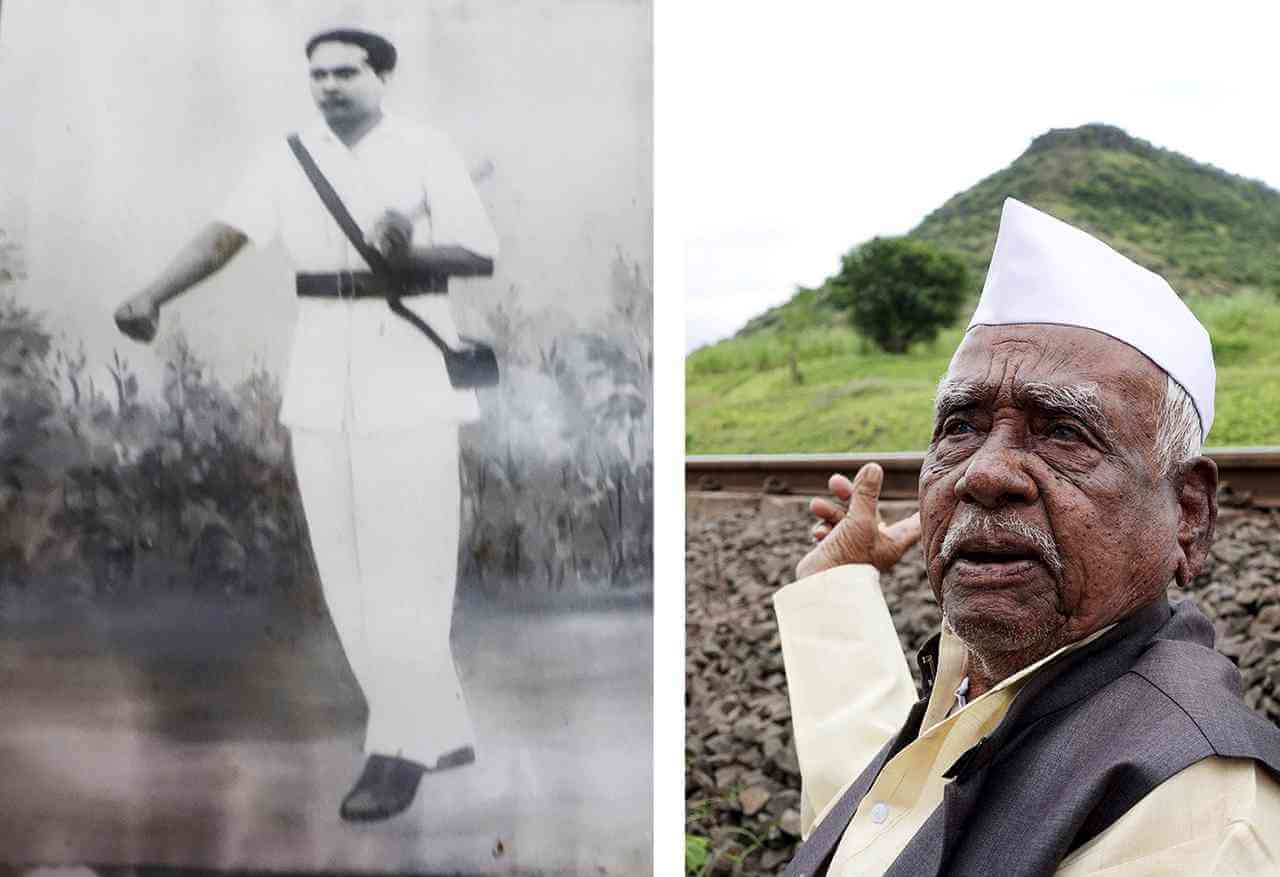
‘Captain Bhau’ of the Prati Sarkar Passed Away at 100
Ramchandra Sripati Lad, known as ‘Captain Bhau’ had been a freedom fighter and head of Tufan Sena in the Prati Sarkar. Born in June 1922, he passed away on February 5, 2022. Alongside GD Lad, he had participated in guerilla raids against trains carrying British treasury funds. Till his last breath, he remained committed to and active in people’s movements. He even participated in the farmers’ movement in Maharashtra whenever he could, and supported the farmers’ movement at Delhi’s borders, in spirit. Long live the legacy of Captain Bhau and the revolutionary Prati Sarkar!
The direct economic thrust of the nyayadan mandals was ambiguous, for though it took up cases of moneylending, land disputes, etc. it did not directly challenge the position of moneylenders and landlords as a class. This was, at least for some, a conscious decision. As one activist put it, 'We did not touch property relations'.[7] As another noted, 'We told the sawkars we are not opposed to your business, but exploitation and oppression are not good.[8] Nevertheless, within this framework, the decisions taken were clearly on the side of the poor or at least of the peasantry as a whole against moneylenders and landlords. `Control of sawkari' and action against `exploitation' meant in practice that very often widows or poor village craftsmen who had mortgaged one or two acres of land to the moneylenders would get it back: cases like this were reported from all over the prati sarkar area. The Kundal group made one famous attack on a very big Brahman moneylender, blackening his face and parading him on a donkey and tearing up his accounts.[9] After this, it was reported, moneylenders all over the area had humbled themselves and freed people from debt and the activists of this group argue that `we didn't limit moneylending—we stopped it'.[10] Similarly there were at least a couple of cases reported of the land of absentee landlords being taken and given to the landless to till.[11]
Such cases—of land being given back to the poor, or given to the poor from the holdings of absentee landlords—with their anti-moneylender and anti-zamindari thrust, seem to have occurred really only towards the end of the period, 1945-46, and their extent is difficult to assess. It seems that the idea of `land to the tiller' (but interpreted as giving absentee landlords' lands to the cultivating tenant, not to the landless) was in the air, but there is no record of a conscious, programmatic adoption of this by the prati sarkar. What can be said, however, is that the function of the nyayadan mandals was to constitute a power at the village level that was more on the side of the poor and toilers than any previous state power, and that the direction of the movement was towards an increasing concern with class issues.
Notes:
1. See the list in Gokhale, op. cit., or of G. S. Altekar in Pawar, op. cit., p.94.
2. Dhanvantari, interview; Gokhale, op. cit.
3. Bhagwanrao Patil, interview; Gokhale op. cit.
4. Harcourt, op. cit., pp. 337-8.
5. D.G. Despande, interview.
6. his was reported from Malkhed, a village I studied in 1980 in the course of an I.L.O. sponsored study of the 'Effects of Agricultural Development of the Status of Women'.
7. D.G. Deshpande, interview.
8. Dhanvantari, interview.
9. Bhagwanrao Patil; in Pawar, op. cit., p.326.
10. Loc cit., and G.D. Lad, interview.
11. Bhagwanrao Patil, interview.

